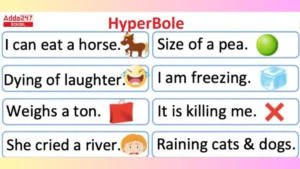Table of Contents
The Finite and Non-finite verbs are two of the most important verbs used frequently in the English language. The name itself suggests that the finite and non-finite verb is opposite to one another. There are two types of verbs, finite verbs and non-finite verbs, that are categorized based on how they act when paired with a subject in a sentence. We will look at the various aspects of the finite and non-finite verb in this post along with understanding the differences between them.
Finite and Non-finite Verbs
Finite and nonfinite verbs may seem perplexing, but ultimately, it boils down to conjugation. Verbs that have either the past or present form are known as FINITE verbs. Verbs in forms such as infinitive, -ing, or -ed are referred to as NONFINITE verbs. Verbs with tense are finite, while verbs without tense are nonfinite. Distinguishing between finite and nonfinite verbs is crucial in English grammar because it impacts the way verbs function in sentences.
Finite and Non-finite Verbs Definition
A finite verb is typically the primary verb in a sentence, indicating the main action performed by the subject in a specific situation. Finite verbs can either function in an independent clause or as part of a verb phrase that is capable of standing alone in a sentence and conveying meaning.
A non-finite verb is usually not the primary verb in the sentence. It doesn’t indicate the verb’s tense or number. Non-finite verbs have multiple functions. They are able to act as an infinitive by adding ‘to’ before the base form of the verb, while also being in the gerund form.
The standard definition of the finite and non-finite verb based on different dictionaries is given below.
Finite Verb Definition
The Collins Dictionary defines a finite verb as “a verb form that distinguishes person, number, and tense, and also mood or aspect, as ‘opens’ in She opens the door.”
The Merriam-Webster Dictionary defines a finite verb as one that is “of, relating to, or being a verb or verb form that can function as a predicate or as the initial element of one and that is limited (as in tense, person, and number)”.
According to the Oxford Learners’ Dictionary, “a finite verb form or clause shows a particular tense, person and number.”
Non-Finite Verb Definition
The Oxford Learners’ Dictionary defines a non-finite verb as “a verb form or clause that does not show a particular tense, person or number”.
A non-finite verb is “an infinitive or a participle and has no tense”, according to the Collins Dictionary.
Finite and Non-Finite Verbs Examples
Candidates can check some examples of Finite and Non-finite verbs below.
Examples of Finite Verb
- Henry likes to read adventure novels.
- My child likes singing Hindi songs.
- Reena reached home after 7 p.m.
- Do you know how to draw an elephant?
Examples of Non-finite Verb
- Fed up with the continuous quarrels, he walked away.
- The trip being cancelled, I made some other plans.
- Would you like to go with me to the party?
- She tiptoed round the house so as not to wake anyone.
Difference Between Finite and Non-finite Verbs
Finite verbs are verbs that undergo conjugation based on the subject in a sentence. They show the subject’s person, number, and tense. Nonfinite verbs in a sentence do not change based on the subject. They do not belong to a particular tense and do not show the person, number, or tense of the subject.
Finite verbs are those that are inflected according to the subject in a sentence, while nonfinite verbs are not conjugated with the subject. Finite verbs show the subject’s person, number, and tense, whereas nonfinite verbs do not. Main verbs in a clause are finite, while auxiliary or modal verbs are typically nonfinite.
Check the table below to know all the major differences between Finite and Non-finite verbs
| Finite Verb | Non-finite Verb |
| Finite verbs are used to represent tense, person or number. | Non-finite verbs have no tense. |
| Finite verbs always agree with the subject performing the action in the sentence. | Non-finite verbs do not agree with the subject in a sentence. |
| Most often, the finite verb can be found next to the subject in a sentence. | Non-finite verbs are sometimes found in the beginning of a sentence. In certain cases, the non-finite verb is found immediately after the finite verb in the sentence. |
| Finite verbs take the simple present and the simple past form of the particular verb. | Non-finite verbs can be used in their infinitive, present participle or past participle form. |
| A finite verb appears to be a part of an independent clause and can help the clause stand alone by making complete sense of what is being conveyed, | A non-finite verb often constitutes a phrase and does not make sense when considered separately. |
Finite and Non-finite Verbs Forms
Finite verbs may present various forms. The person, number, and tense of the subject determine these forms. These are a few instances of finite verb forms.
- Present: I am singing.
- Past: She was eating.
- Future: They will dance.
- Present perfect: We have been playing.
- Modal: You should go.
How to Use Non-finite Verbs in Sentences
Understanding non-finite verbs in sentences can be simplified if you comprehend how finite verbs function. Non-finite verbs, as opposed to finite verbs, do not contain main verbs or indicate a specific tense. Here are some suggestions on how to utilize non-finite verbs effectively in your daily life and communicate your thoughts clearly and simply. Non-finite verbs consist of the base form, the present participle (verb+ing), the gerund form, the past participle, and the infinitive form.
Finite Verb Usage Rules
Finite verbs have several rules for usage in a sentence. Here are some of the rules for using finite verbs:
1) Finite verbs must be used in the right context.
This rule means certain verb can be used in specific contexts only. For example, the verb “can” can only used in the context of possibility (e.g., “I can do it”).
2) Finite verbs must be conjugated with the subject.
When the subject is “I,” the verb “work” should be conjugated as “I am working,” for example.
3) Finite verbs must agree with the subject in person, number, and tense.
This is the most basic property of the finite verbs that it must follow. As an illustration, in the case of “I” as the subject, the verb should be in the first person singular form. Example: “I am going”
4) Finite verbs must be in the correct tense.
For instance, if the sentence is written in past tense, the verb needs to be in past tense as well (e.g., “She was eating”).
| Related Articles | |
| Linking Verbs | Regular Verbs |
| Phrasal Verbs | Main Verbs |
| Modal Verbs | Verb Forms |



 Hyperbole- Explanation, Definition, Exam...
Hyperbole- Explanation, Definition, Exam...
 500+ Antonyms Words List for Kids, Downl...
500+ Antonyms Words List for Kids, Downl...
 Vocabulary Words with Meaning and Senten...
Vocabulary Words with Meaning and Senten...









